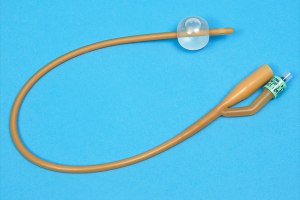

MedFriendly®


Catheter
A catheter is a flexible, hollow tube that is inserted into
an opening of the body, blood vessel, or duct in the
body, with the main purpose of allowing fluids, gas, or
surgical instruments to pass from or into these areas.
A duct is a natural tube in the body that fluids and/or
substances pass through. Catheters are also used to
keep passageways in the body open. Most catheters
are made of soft plastic, rubber, or silicon (a
nonmetallic element). Catheterization, catherize, and
catherizing is the passage of a catheter into a body
opening or organ to inject or remove a fluid.
An indwelling catheter
FEATURED BOOK: Medical-Surgical Nursing Made Incredibly Easier
There are many types of catheters. For example, a Foley catheter is used to drain
retained urine out from the bladder (a structure in the body that holds urine). To do this,
the Foley catheter is passed through the urethra and into the bladder. The urethra is a
tube shaped structure in the body that drains urine from the bladder. Another type of
catheter is a balloon catheter, which is used to unclog blood vessels, stretch them open,
or control bleeding. The process of inserting a catheter is known as catheterization.
When a catheter is left permanently in the body it is known as a permcath. When a
catheter is left inside the body (temporarily or permanently), it is known as an indwelling
catheter. Interventional cardiology is the use of catheters for the treatment of structural
diseases of the heart and diseases caused by decreased oxygen to the heart. Catheter
comes from the Greek word "katheter" meaning "to send down."
"Where Medical Information is Easy to Understand"™















